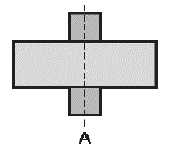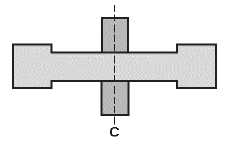3-6
Now let's look at the effect of weight distribution in the rotor of a gyro. Consider three rotors of the
same weight, as shown in figure 3-6, view (A), view (B), and view (C), with the diameter of one rotor
half the diameter of the other two. Now, when we spin these rotors at the same speed, we find that the
rotors with the greater diameter are much more rigid than the one with the smaller diameter. Next, we find
that we can make the rotors equally rigid by causing the rotor with the smaller diameter to spin faster than
the larger rotors. Thus rigidity depends both on speed and distribution of weight. The weight of the larger
rotor being farther away from the axis of spin causes it to be more rigid. This effect is even more
pronounced if we shape the rotor as shown in view C of figure 3-6. Shifting as much weight as possible to
the outer rim of the rotor increases rigidity even further.
Figure 3-6A.—Gyro rotors with equal weight and unequal diameters.
Figure 3-6B.—Gyro rotors with equal weight and unequal diameters.
Figure 3-6C.—Gyro rotors with equal weight and unequal diameters.
Q-6. A universally mounted gyro has how many gimbals?
Q-7. What factors determine the rigidity of a gyro?





